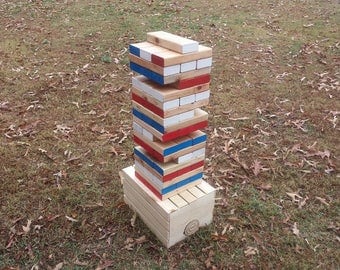

#Giant jenga game toys r us full#
According to a November 1982 Washington Post article, a full 19 percent of the company's sales in the prior quarter-which drove $189.6 million in revenue-came from electronic toys. A Copley News Service article from the era found that sales at Toys"R"Us, driven by the boom in electronic games, were outpacing overall population trends, which traditionally defined toy sales.Īnd the numbers kept improving. In the third quarter of 1979, Toys"R"Us saw its sales jump 36.2 percent, while sales at other major retailers were basically flat. Little did he know how quickly the industry would shift its value proposition around electronics. In a 1978 Washington Post article, local Toys"R"Us manager Bill Bederman spoke in a stunned tone about the success these toys were seeing.

That meant the inexpensive-to-produce toys had major margins that the industry then wasn't particularly used to. In 1978, an electronic toy often went for around $30, an amount equivalent to $109.28 today. The earliest toys bearing silicon boards were primitive, of course, but they were also quite expensive. This proved a particularly astute move on the part of toy manufacturers-which not only created a retailer dedicated to play that drove interest in toys far beyond Christmas, but created a hub for a trend that was soon to revamp the industry-electronic gadgets. With the toy chain at one point caught in its corporate parent's troubles, the Toy Manufacturers Association-now known as the Toy Industry Association- had to step in to convince banks to help the chain out financially so that it could continue growing. Formed in the 1950s and brought under the tutelage of Interstate Department Stores in the 1960s, it took decades for the chain to reach its iconic behemoth status.īut there was a time when the toy retailer wasn't doing so hot. Toys"R"Us held a lot of value for the toy industry as a whole, electronics or not. The toy industry was utterly reshaped by electronics in the 1970s and 1980s, first by memorably tinny toys like Milton Bradley's Simon and Texas Instruments' Speak and Spell, and later by the rise of video game consoles.


 0 kommentar(er)
0 kommentar(er)
